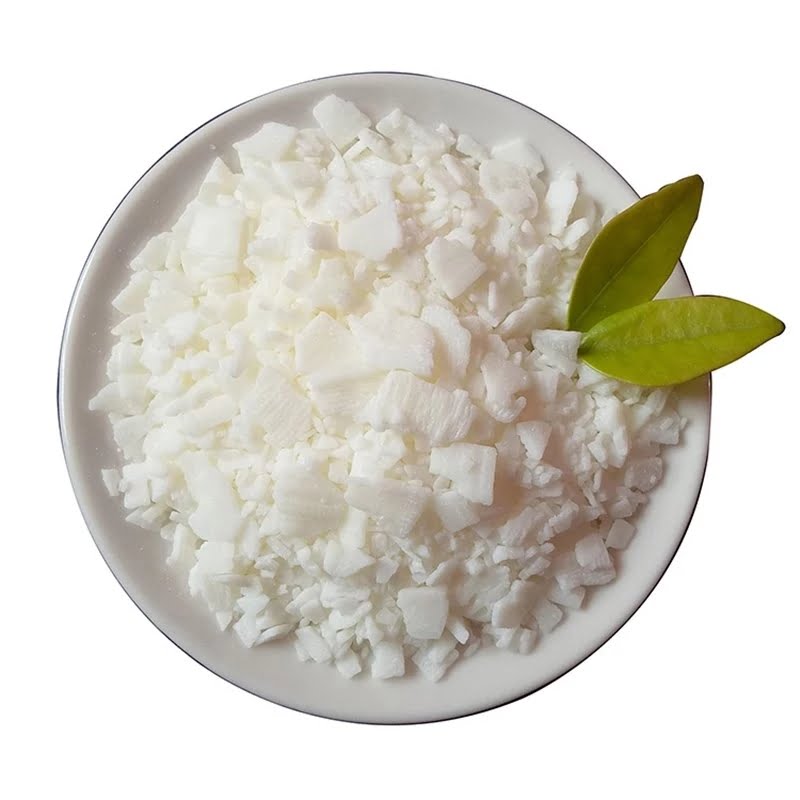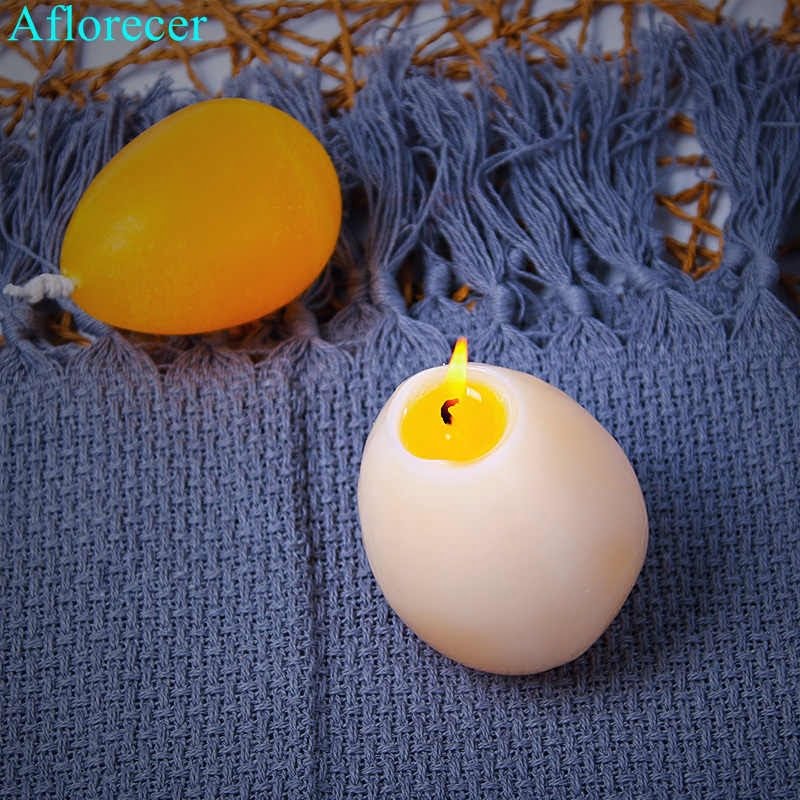The allure of candles has been a part of human civilization for centuries, but in recent years, they have experienced a renewed surge in popularity. From cozy nights at home to soothing aromatherapy sessions, candles have become an essential lifestyle accessory for many.
This growing trend has sparked the curiosity of aspiring entrepreneurs who are considering delving into the candle making industry. In this blog post, we will explore the question on everyone’s mind: Is making and selling candles profitable?
The business potential of candle making cannot be overlooked in today’s market. As the demand for handmade and artisanal products continues to rise, candles have emerged as a lucrative niche within this growing industry. Entrepreneurial spirits seeking creative outlets and economic opportunities have begun tapping into the candle market with great success. However, before embarking on this venture, it is vital to understand the various factors that contribute to profitability in the candle-making world.
In subsequent sections, we will delve into the factors that influence profitability in the candle-making business, such as production costs, pricing strategies, packaging and branding, and competition. We will also analyze consumer demand and explore different target markets that drive sales within the industry.
By examining these aspects and providing real-life examples of successful businesses in niche markets, we aim to equip aspiring entrepreneurs with valuable insights necessary to make informed decisions about entering this industry. So let us dive deeper into the fascinating world of candle making and discover its potential for profitability.
The Lucrative Business of Candle Making
The demand for handmade and artisanal products has been on the rise in recent years, and candles are no exception. The allure of candles as aesthetic decor items, mood enhancers, and even self-care essentials has contributed to their growing popularity in the modern lifestyle. As a result, the candle making industry has become increasingly lucrative, offering ample opportunities for entrepreneurs to turn their passion into a profitable business.
The Rising Trend of Handmade and Artisanal Candles
In today’s fast-paced world dominated by mass-produced goods, consumers are increasingly seeking out unique and personalized products that reflect their individuality. Handmade and artisanal candles fit this desire perfectly. These candles are often crafted with care using high-quality ingredients and are known for their attention to detail and artistic flair. As such, they have become highly sought after by consumers who appreciate the charm and craftsmanship that goes into each piece.
Furthermore, the rise of sustainability and eco-consciousness has also contributed to the popularity of handmade candles. Many consumers prioritize products that are environmentally friendly and free from harmful chemicals. Handmade candles typically use natural waxes like soy or beeswax instead of petroleum-based paraffin wax commonly found in mass-produced candles. This eco-friendly aspect aligns well with the values of conscious consumers who seek sustainable options.
Potential Profitability in Candle Making
The candle making industry has experienced significant growth in recent years, driven by both an increase in consumer demand and a wave of talented artisans who have brought innovation to the craft. According to market research reports, the global candle market is expected to reach impressive figures within the next few years.
One key factor contributing to the profitability of candle making businesses is that they can cater to various target markets. Candles serve numerous purposes ranging from home decor to aromatherapy, creating opportunities for niche markets like luxury home goods or wellness products. By identifying these specific markets and developing unique offerings to cater to their needs, candle makers can tap into a customer base willing to invest in high-quality, specialized products.
The Market Demand for Candles
Candles have been a part of human civilization for centuries, serving a variety of purposes from providing light to creating ambiance. In recent years, there has been a significant surge in the demand for candles as they are now considered an essential lifestyle product. The market demand for candles is driven by various factors, making it a profitable industry to explore.
According to market research, the global candle market size was valued at approximately 3.45 billion USD in 2020 and is projected to expand at a compound annual growth rate (CAGR) of 4.9% from 2021 to 2028. This growth can be attributed to the increasing consumer preference for eco-friendly and sustainable products, as well as the rising popularity of aromatherapy and self-care practices.
Different target markets and consumer segments contribute to the overall demand for candles. The home decor sector is one of the primary markets driving sales, with consumers using candles as decorative elements to create a cozy and inviting atmosphere in their homes. Additionally, the spa and wellness industry utilizes scented candles as a means of relaxation and stress relief during massage therapies and yoga sessions.
In terms of demographics, women are generally considered the primary consumers of candles. However, men are also increasingly attracted to luxury and masculine-scented candles, expanding the target audience for candle makers. With such diverse consumer segments fueling the demand, there are ample opportunities for entrepreneurs looking to enter the candle industry.
To effectively tap into this growing market demand, candle makers must stay informed about current trends, consumer preferences, and emerging niche markets. By conducting thorough market research and adopting innovative approaches in terms of product design and marketing strategies, businesses can strategically position themselves within this lucrative industry.
| Market Segment | Percentage Contribution |
|---|---|
| Home decor | 45% |
| Spa and wellness | 30% |
| Gifts and souvenirs | 15% |
| Luxury and specialty | 10% |
Factors Influencing Profitability
Production Costs
One of the key factors that can influence the profitability of a candle making business is the production costs. This includes the cost of raw materials, such as wax, wicks, fragrance oils, and dyes. Additionally, there may be expenses related to equipment and tools needed for candle making. It is important for candle makers to carefully manage these costs and find suppliers who offer competitive prices or bulk discounts.
Pricing Strategies
Another factor that plays a crucial role in the profitability of a candle business is the pricing strategy. Setting the right prices for your candles can greatly impact sales volume and profit margins. It’s essential to consider factors such as market demand, competition, and perceived value when determining pricing. Offering different price points for different candle sizes or packaging options can also help attract a broader range of customers.
Packaging and Branding
The way candles are packaged and branded can affect their perceived value and ultimately their profitability. Investing in high-quality packaging materials and design can create a sense of luxury or uniqueness that entices customers to choose your candles over competitors’. Consistent branding across product labeling, website design, and marketing materials can also help build brand recognition and customer loyalty.
Competition
The level of competition in the candle making industry can impact profitability. It’s important to research existing competitors in your target market to understand their offerings, pricing strategies, and marketing tactics. Identifying gaps in the market or finding ways to differentiate your candles from what is currently available can help you stand out from competitors. Building strong relationships with customers through excellent customer service and personalized experiences can also give you a competitive edge.
By carefully considering these factors influencing profitability – production costs, pricing strategies, packaging and branding, and competition – candle makers can increase their chances of success in the industry. Understanding these aspects allows entrepreneurs to make informed decisions and develop strategies that maximize profitability while delivering high-quality candles to their customers.
Cost of Candle Production and Profit Margins
When considering the profitability of a candle making business, it is essential to examine the cost of production and the potential profit margins. Candle production involves various expenses, including raw materials, equipment, labeling, and distribution.
One of the significant costs in candle making is the raw materials. This typically includes wax, wicks, fragrances, colorants, and containers. The prices of these materials can vary depending on their quality and source. It is crucial for candle makers to find reliable suppliers that offer both quality products and competitive prices to ensure cost efficiency.
Additionally, there are expenses associated with equipment and tools required for candle making. This may include melting pots or double boilers for melting wax, thermometers for temperature control, molds or containers for shaping candles, and various instruments for measuring fragrance oils or colorants. Investing in durable equipment is key to maintaining long-term profitability.
Labeling and packaging are essential aspects of candle production that impact both product appeal and cost. Labels should be visually appealing, informative about the scent and ingredients used in the candle, and compliant with relevant regulations. Packaging options can range from simple boxes or bags to more intricate designs that reflect the brand’s image. However, it is important to strike a balance between attractive packaging and keeping costs manageable.
Distribution costs should also be factored into the overall expense structure. Whether a business sells candles through an online store or physical retail locations, shipping fees can add up quickly. Efficient inventory management systems can help reduce distribution costs by accurately estimating demand and maintaining appropriate stock levels.
Profit margin calculation depends on factors such as pricing strategy and competition within the market. It is important to set competitive yet profitable prices that cover production costs while also factoring in desired profit margins. Market research can provide valuable insights into price points that consumers are willing to pay for different types of candles.
Ultimately, careful attention to expense management combined with strategic pricing decisions can help candle makers achieve healthy profit margins. Understanding the cost of production and calculating profit potential are crucial steps in building a profitable candle making business.
Niche Markets and Differentiation
In such a competitive industry, finding a niche market is essential for candle makers who want to maximize profitability. By targeting a specific segment of consumers with unique needs and preferences, candle makers can differentiate themselves from their competitors and command higher prices for their products. Here are some strategies that successful candle makers have employed to tap into niche markets:
- Specialty Fragrances: One way to stand out in the crowded candle market is by offering specialty fragrances that cater to specific customer tastes. This could include unique blends inspired by different regions, cultures, or seasons. For example, a candle maker specializing in luxury candles may offer scents like aged leather or smoked whiskey, while a brand catering to eco-conscious consumers could create candles using only natural essential oils.
- Customization Options: Many consumers value personalized products, and candles are no exception. Candle makers can cater to this demand by offering customization options such as personalized labels, embossed logos, or even the ability for customers to create their own unique blend of fragrances.
- Sustainable and Eco-friendly Candles: With growing awareness about environmental issues, there is an increasing demand for sustainable and eco-friendly products. Candle makers who prioritize using renewable materials like soy wax or beeswax instead of paraffin can appeal to environmentally conscious consumers.
- Ritual and Wellness Candles: Another emerging niche market revolves around candles that serve specific purposes beyond just providing ambiance and fragrance. This includes ritual candles used in meditation or spiritual practices, as well as wellness-focused candles that incorporate ingredients like essential oils known for their calming or invigorating properties.
By targeting niche markets with specialized offerings, candle makers can attract loyal customers who are willing to pay a premium for unique and high-quality products.
Examples of Successful Niche Markets
To illustrate the potential profitability of niche markets in the candle making industry, let’s take a look at two successful candle makers who have excelled in finding their own niches:
- The “Farm-to-Table” Candle Company: This candle maker taps into the niche market of sustainability and locally sourced goods. They source their beeswax from local farms known for their ethical beekeeping practices, highlighting the importance of supporting local agriculture.
Their candles are marketed as eco-friendly, pesticide-free, and hand-poured using traditional techniques. By positioning themselves as a sustainable and locally focused brand, they have attracted environmentally conscious consumers willing to pay a premium for their products. - The “Aromatherapy Oasis” Candle Brand: This company focuses on the wellness niche market by offering candles with carefully selected essential oil blends that promote relaxation and stress relief. Their product line includes candles specifically designed for different purposes like sleep aid, focus enhancement, or mood elevation. By targeting customers looking for holistic self-care experiences, this candle brand has been able to carve out a profitable niche in the market.
These examples demonstrate how finding a specific audience with unique needs can lead to profitability in the candle making industry. By understanding the desires and preferences of niche markets, candle makers can position themselves as experts and create products that cater to these customers’ specific demands.
Marketing and Sales Strategies
When it comes to making and selling candles, having effective marketing and sales strategies is crucial for success. In today’s digital age, there are various platforms and techniques that can be utilized to reach a wider audience and boost sales. Here are some key strategies to consider:
- Online Platforms: Utilizing online platforms such as e-commerce websites, social media platforms, and online marketplaces can greatly expand the reach of your candle business. Create an appealing website or online store where customers can easily browse and purchase your products. Additionally, establish a strong presence on popular social media platforms like Instagram, Facebook, and Pinterest to showcase your candles and engage with potential customers.
- Social Media Marketing: Social media has become a powerful tool for promoting products and connecting with target audiences. Create visually appealing content that highlights the uniqueness of your candles, such as beautiful product photography or behind-the-scenes videos of the candle-making process. Engage with followers, respond to comments, and collaborate with influencers who can help promote your products to their own followers.
- Collaboration with Influencers: Collaborating with social media influencers who have a large following in relevant niches can significantly boost brand visibility and sales. Reach out to influencers who align with your target market and offer them free samples of your candles in exchange for promotion on their platforms. This can expose your brand to a whole new audience who may be interested in purchasing your candles.
- Customer Engagement: Building strong relationships with customers is essential for repeat business and word-of-mouth recommendations. Offer excellent customer service by promptly responding to queries or concerns. Consider implementing loyalty programs or offering special promotions exclusively for existing customers to encourage their continued support.
| Marketing Channel | Percentage of Candle Business Owners who Found Success through Channel |
|---|---|
| E-commerce websites | 65% |
| Social media marketing | 72% |
| Influencer collaborations | 57% |
By implementing these marketing and sales strategies, candle makers can effectively promote their products and increase profitability. It is important to regularly analyze and assess the success of each strategy, adjusting and adapting as needed to stay ahead in the competitive candle market.
Success Stories and Case Studies
The candle making industry has proven to be a lucrative business for many entrepreneurs, with success stories and case studies abound. These individuals have not only turned their passion for candles into a thriving business but also managed to carve out their own unique niche in the market. By sharing these success stories, aspiring candle makers can gain insights and inspiration on how to make their venture profitable.
One such successful entrepreneur is Jane Smith, who started her candle-making business from her kitchen table. She initially struggled to find a market for her candles amidst fierce competition. However, she soon realized that there was a gap in the market for eco-friendly and sustainable candles made from natural ingredients.
By focusing on this niche market, Jane was able to differentiate herself from larger competitors and cater to environmentally conscious consumers. Her brand quickly gained momentum through word-of-mouth advertising, and she now supplies her products to boutique stores nationwide.
Another inspiring success story is Chris Johnson, who capitalized on the growing trend of personalized gifts. Realizing that people were looking for unique and thoughtful presents, Chris started offering customized candles where customers could choose their preferred fragrance and design. He also offered personalized labeling with messages or initials.
Through social media marketing and collaborations with influencers in the lifestyle and home decor space, Chris saw exponential growth in his sales within a short period. His success proves the power of differentiation and tapping into consumer desires for personalization.
These examples demonstrate that finding the right niche market and developing unique selling points are crucial for profitability in the candle making industry. Success often lies in understanding consumer demands, trends, and gaps in the market while aligning them with one’s passion for candles.
By following in the footsteps of these successful entrepreneurs, aspiring candle makers can learn valuable lessons about pricing strategies, production costs management, packaging and branding techniques as well as effective marketing strategies like collaborations with influencers or using online platforms to reach potential customers effectively.
Conclusion
In conclusion, the question of whether making and selling candles is profitable can be answered with a resounding yes. Throughout this article, we have explored the lucrative business of candle making and highlighted the market demand for these products. We have also delved into the various factors that can influence profitability, such as production costs, pricing strategies, packaging and branding, and competition.
One of the key takeaways from our discussion is the importance of finding a niche market and differentiating oneself in order to achieve profitability in the candle making industry. By developing unique selling points and targeting specific consumer segments, entrepreneurs can carve out their own successful businesses. We have even provided examples of individuals who have achieved great success by following this strategy.
Effective marketing and sales strategies are crucial in promoting handmade candles. Online platforms, social media marketing, and collaboration with influencers can help increase brand visibility and attract customers. However, it is equally important to prioritize customer engagement and building a loyal customer base to ensure long-term profitability.
In answering the question posed in the title of this article, it is clear that making and selling candles has significant potential for profit. With careful planning, market research, differentiation, and effective marketing strategies, entrepreneurs can turn their passion for candles into a thriving business opportunity. The candle making industry continues to grow as consumers seek unique artisanal products in today’s modern lifestyle. So don’t hesitate to explore this profitable venture.
Frequently Asked Questions
Is making and selling candles a good business?
Making and selling candles can be a good business for many reasons. Firstly, there is a high demand for candles as they are not only used for decorative purposes but also for aromatherapy or creating ambiance. This demand ensures a steady customer base.
Additionally, the startup costs for candle-making businesses can be relatively low compared to other ventures, making it accessible to aspiring entrepreneurs. Furthermore, with the rise of online marketplaces and social media platforms, it has become easier to reach a large audience and promote your candle products effectively.
How much can you make selling homemade candles?
The potential earnings from selling homemade candles can vary significantly depending on various factors such as the quality of your products, marketing efforts, pricing strategies, and market demand. Some successful candle-makers have reported making substantial profits by targeting niche markets or offering unique and high-quality candles that differentiate themselves from mass-produced alternatives.
However, it is important to note that success in any business requires dedication, hard work, and continuous innovation in order to stay competitive and sustain profitability over time.
What kind of candles sell the most?
Different types of candles have different levels of popularity and consumer appeal. Currently, scented candles tend to sell the most due to their ability to enhance the overall atmosphere of a space while providing pleasant fragrances. Within the scented candle category, certain fragrances such as lavender, vanilla, or citrus tend to be more popular among consumers due to their universally appealing scents.
However, it’s worth noting that trends may change over time as new preferences emerge or seasonal variations influence consumer choices. Hence, keeping an eye on market trends and adapting product offerings accordingly can help maximize sales potential in the ever-evolving candle industry.

Welcome to my candle making blog! In this blog, I will be sharing my tips and tricks for making candles. I will also be sharing some of my favorite recipes.





